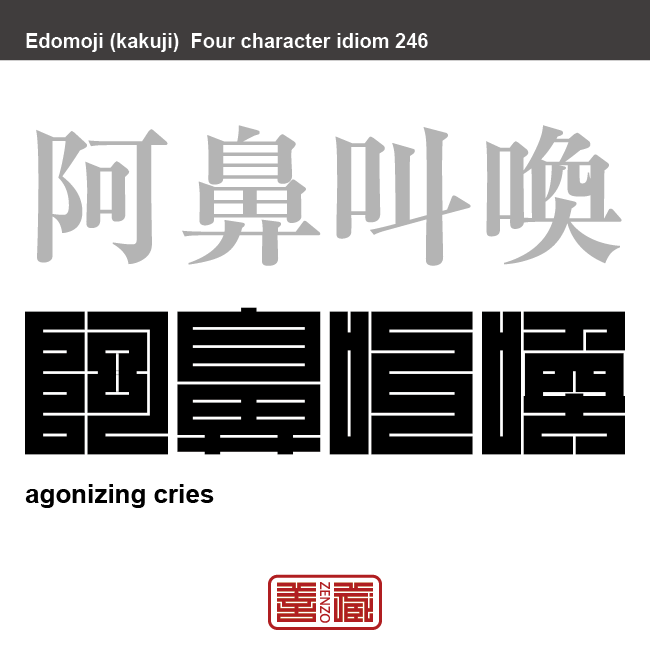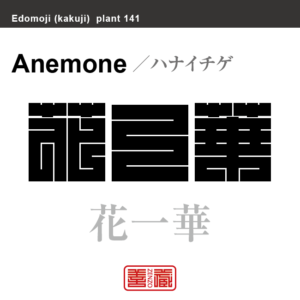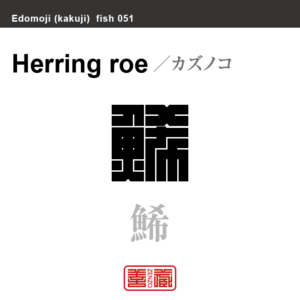阿鼻叫喚 あびきょうかん 角字でことわざ、四字熟語

阿鼻叫喚
あびきょうかん
Abi-Kyoukan
Agonizing cries
Unicode: [阿_0x963F][鼻_0x9F3B][叫_0x53EB][喚_0x559A]
人々が苦しみ泣き叫ぶ様子。非常にむごたらしい状態。非常な苦しみの中で号泣し、救いを求めるさま。
もともとは仏教用語。仏教の八大地獄「阿鼻地獄」「叫喚地獄」のこと。
阿鼻地獄は別名無間地獄とも言われ、絶え間なくひたすら焼かれ続け、苦しみを与え続けられる地獄。
叫喚地獄は煮えたぎる釜で茹でられ、泣き叫ぶ声を上げ続けるという地獄。
角字とは?
江戸時代に誕生した角字は、正方形のグリッド内にほぼ水平・垂直のラインのみで文字(漢字)が表現されるグラフィックアートです。
正方形という限られた空間の中に、あらゆる文字を閉じ込めようとするグラフィックデザインは、前述した、ミニマムな物に対する日本人特有のこだわりが随所に感じられます。
そのシンプルで有りながら、奥深い「角字」は多くの日本人を魅了し、お祭りで着る半被や印半纏(しるしばんてん)と言われる着物や、商標、印鑑、家紋、看板デザインなどに今日まで数多く使用されてきました。
What is Kakuji?
There is a style of penmanship called “Kakuji” in Japan. Edo-born Kakuji is a graphicart that expresses letters (kanji) with almost horizontal and vertical lines only.
The design which bases on many straight lines seems simple, or too plain even at its first glance; yet this beautiful artistic penmanship that encompasses the aesthetic of the Japanese in the Edo era, also known as “Iki”, and playfulness has long been inherited to this day, thanks to the masteries’ long years of efforts in training and refinement.
Kakuji with its simplicity and depth is used for designs such as trademark, hanko stamp, family crest and signboard.































































 2文字コード:MZ 3文字コード:MOZ 数字:508 ITU:258 ccTLD:.mz
2文字コード:MZ 3文字コード:MOZ 数字:508 ITU:258 ccTLD:.mz







































































































































